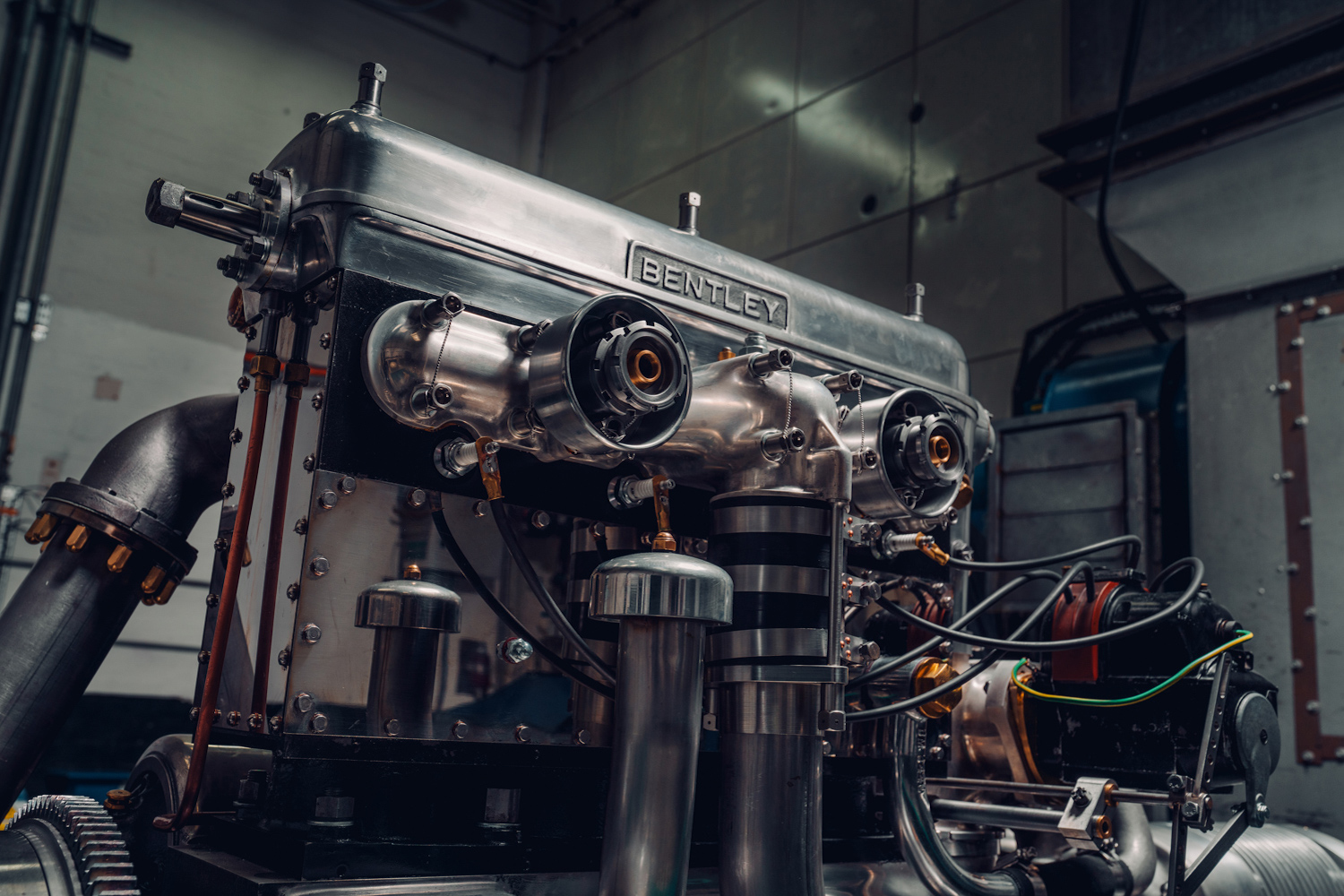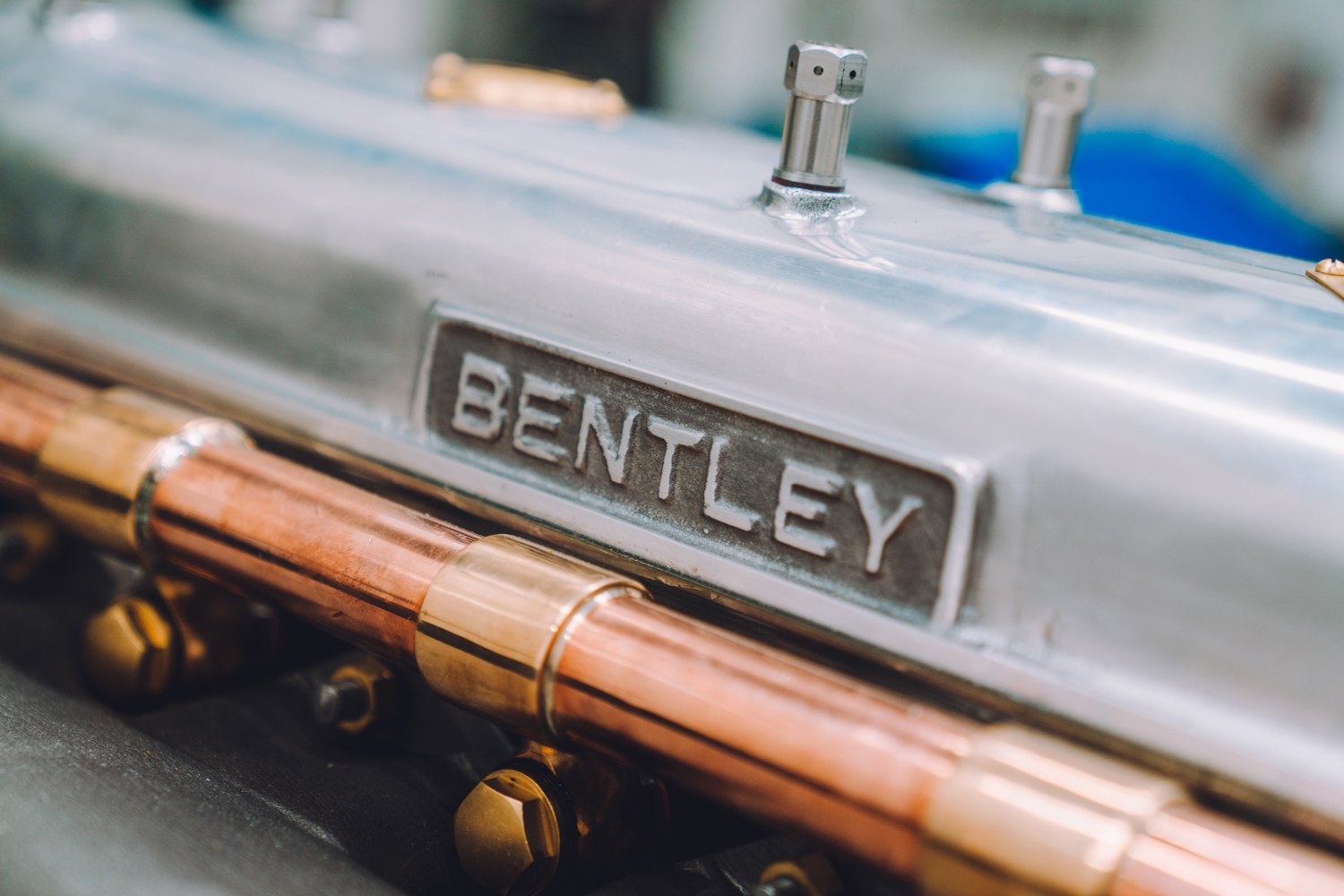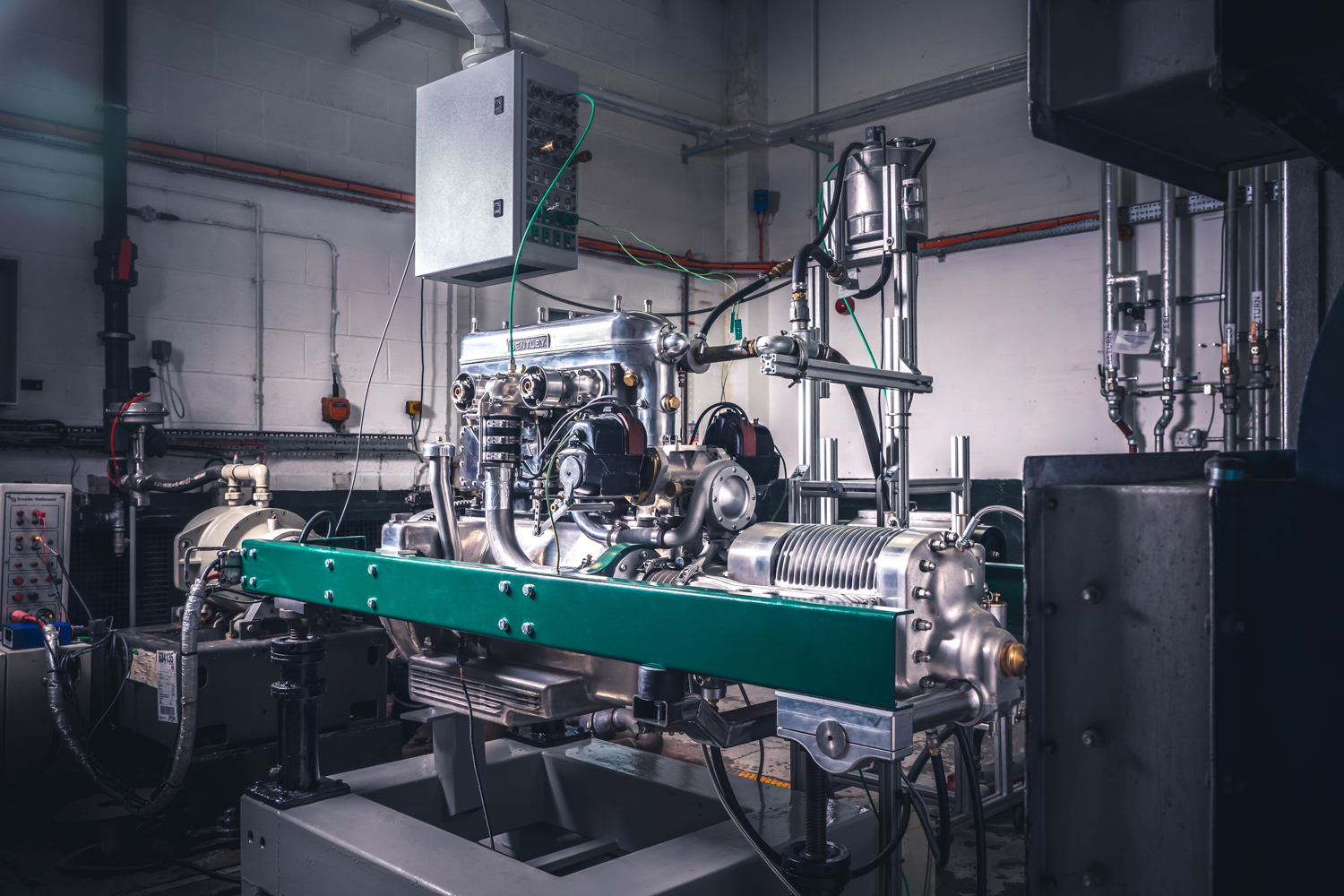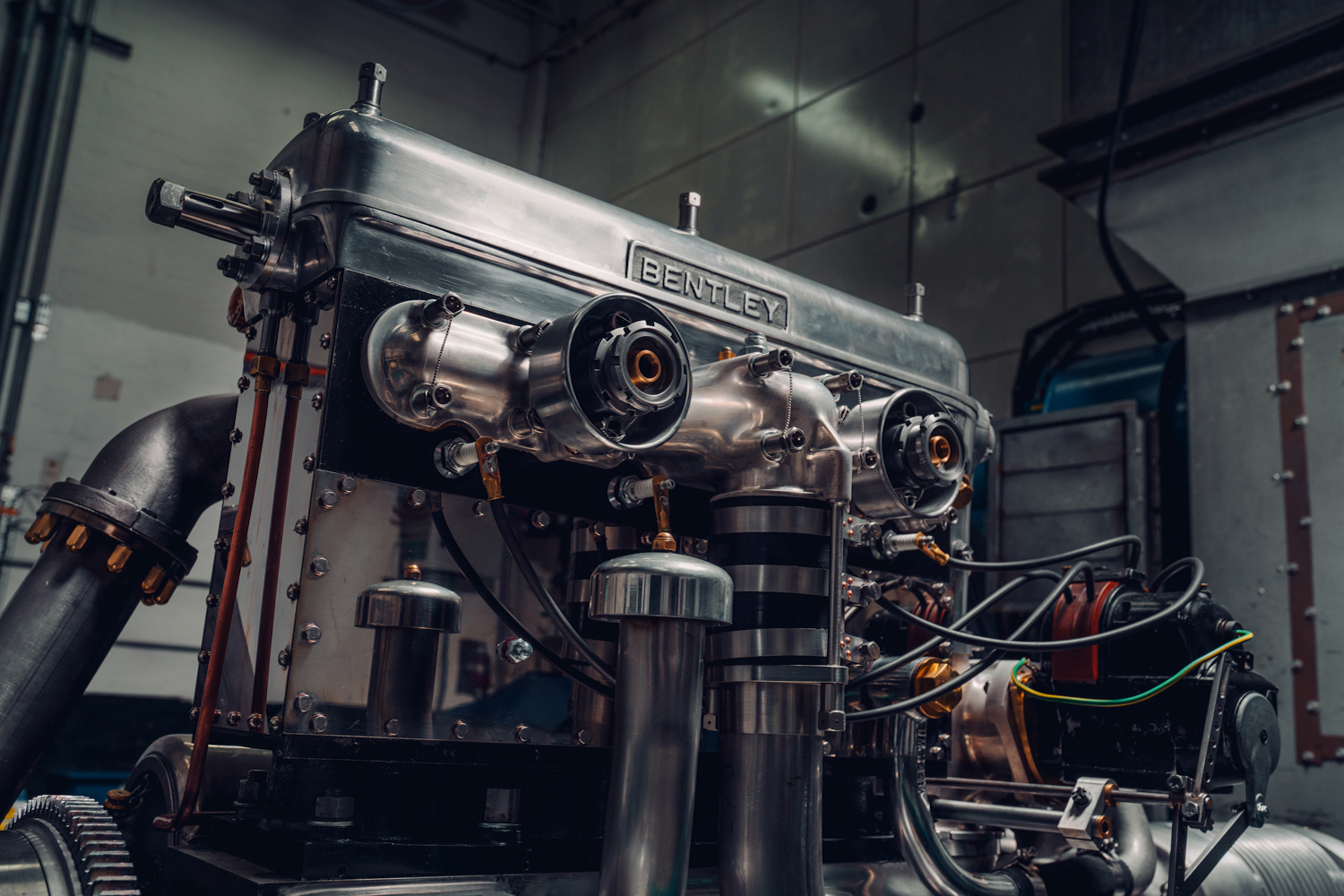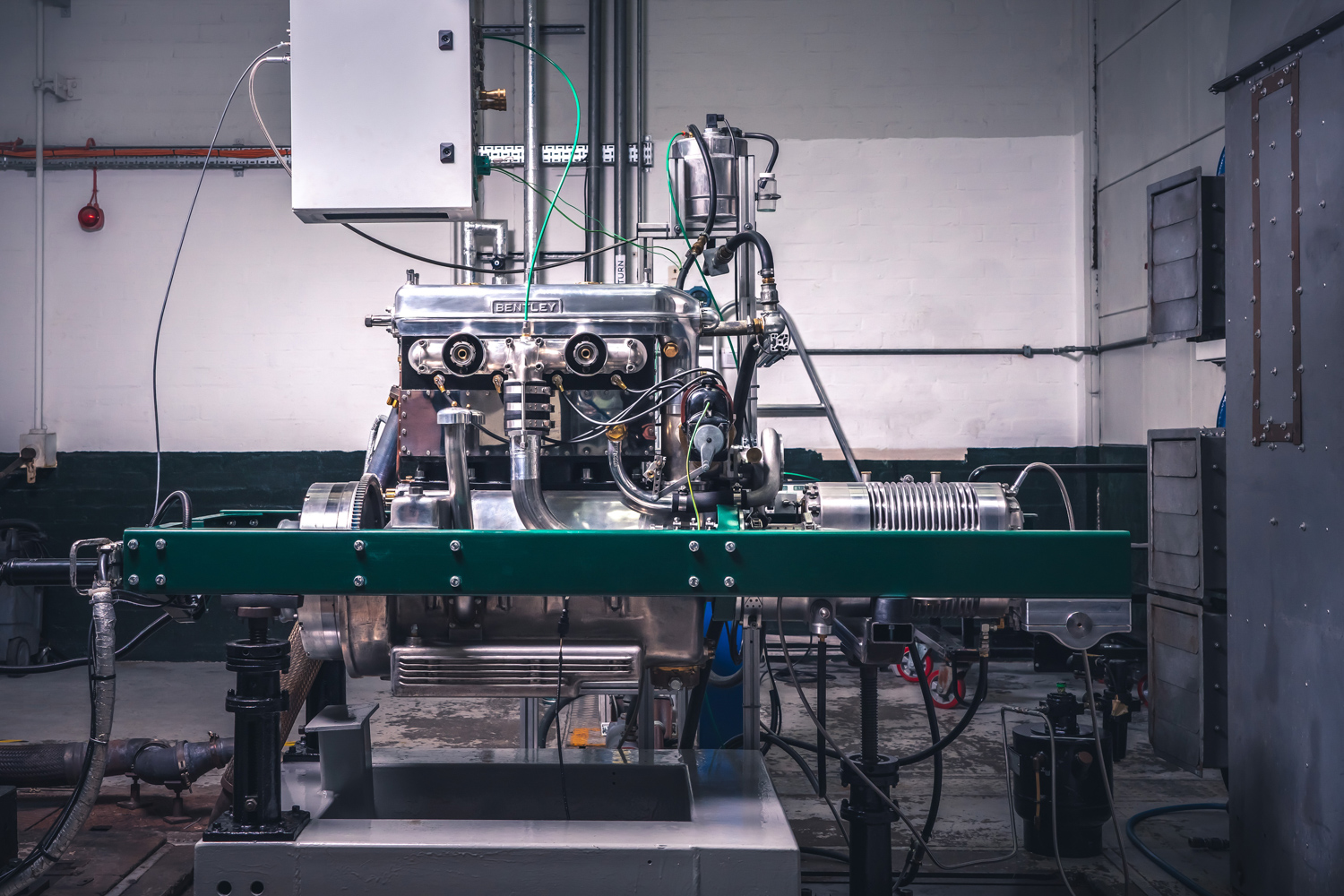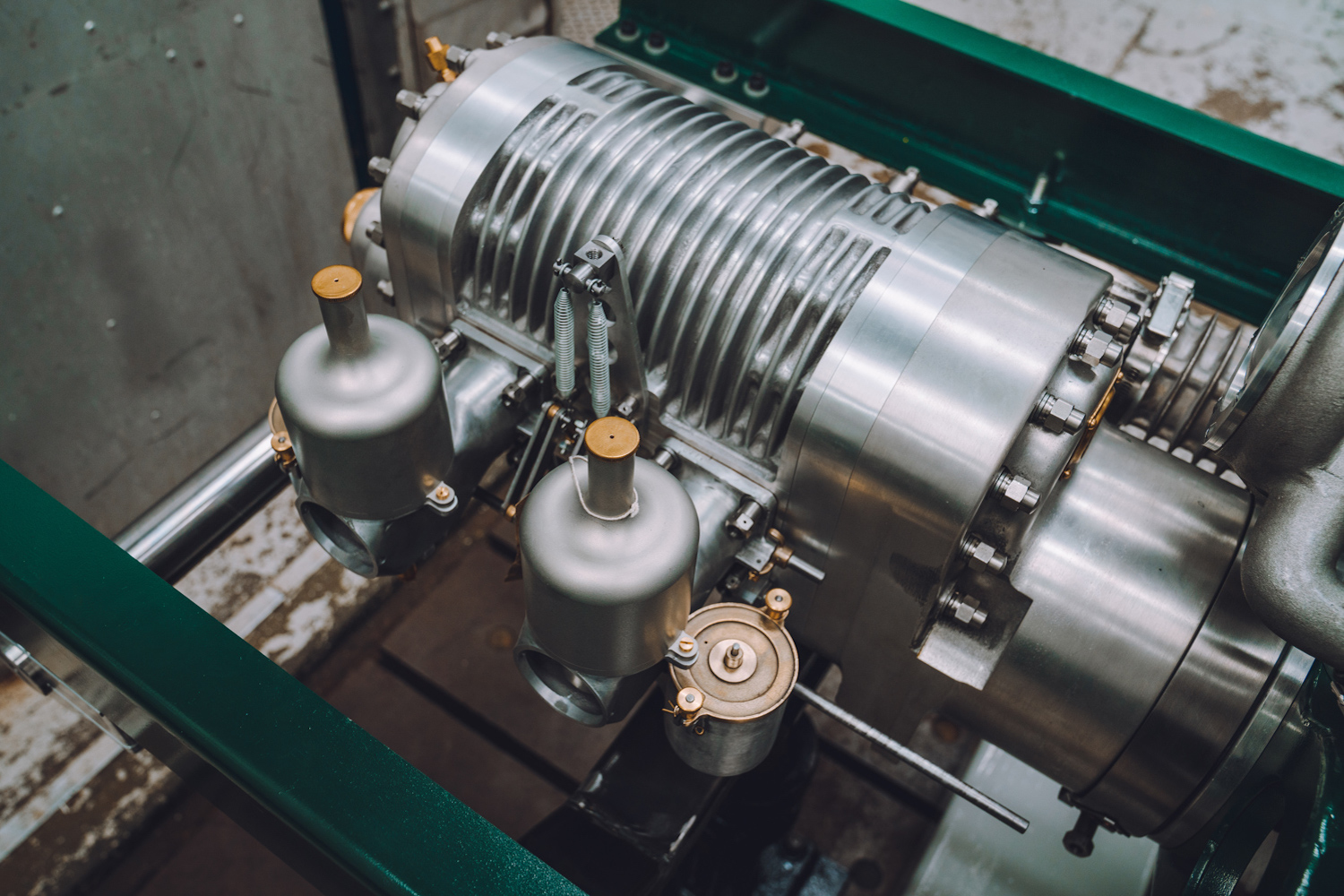The engine for the first vehicle in the Blower Continuation Series from Bentley has been fired up for the first time, on a test-bed at the company's Crewe factory in the UK.
Full test-bed programme
Bentley announced it would be creating a run of 12 newly built recreations of one of the most famous cars in its history, the supercharged 4½-litre Blower of the late 1920s, for a discerning, modern-day clientele. Car Zero, the engineering prototype for the Continuation Series, is now under construction and so it was due a test-firing. The actual bed used to power up the motor has been part of the facility since it was built in 1938 and the cells were used to test Merlin V12 aero engines for the Spitfire and Hurricane planes of the Second World War.
To test the 'Blower's' engine, a replica of the car's front chassis had to be put together to hold the engine in place and then, once it was mounted to the computer-controlled dynamometer, a new software version to measure and control the engine was written and tested. This allowed Bentley's engineers to monitor and run the engine to precise parameters. Since first fire-up a few weeks back, the engine is proceeding through a schedule of running-in before it has a full power test. This involves the unit being tested across a 20-hour cycle, gradually increasing both engine speed and load conditions from idle up to 3,500rpm. Once it has been fully run in, a full-load power curve will be measured, before it will undergo durability testing - covering a simulated 35,000km of real-world driving across 8,000km of track-driving tests.
Historical link
Back in the 1920s, Tim Birkin took the 4½-litre engine, as designed by WO Bentley himself, and asked for more power so he could go racing with it. WO believed that to get more than the standard 130hp, the capacity should have been increased, but Birkin wanted to supercharge the unit - something WO was against, as he felt it 'corrupted' his design and brought reliability concerns to bear.
Nevertheless, Birkin pressed on with his plan and, complete with funding from his financier Dorothy Paget, he commissioned Amherst Villiers to create a Roots-type supercharger for the Bentley. The company duly did and with its new forced induction, power leapt to around 240hp. True to WO's fears, though, the 'Blowers' were incredibly fast but fragile, so while they played a key role in Bentley's illustrious motorsport history, over the 12 races the four cars contested, they never managed to secure a race win.

